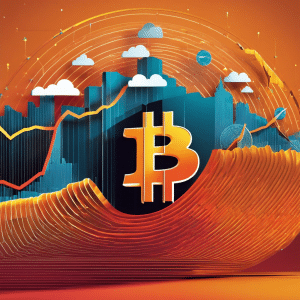Key Takeaways
You’ve probably heard the buzz about meme coins taking over crypto conversations. These digital assets started as jokes but have evolved into serious investment vehicles that can generate substantial returns. The key to success in this volatile market isn’t just buying and holding – it’s knowing when and how to move your meme coin investments strategically.
Moving meme coins requires careful timing and a solid understanding of market dynamics. Whether you’re transferring between wallets or exchanges or adjusting your portfolio positions you’ll need to navigate gas fees and market volatility. Smart investors recognize that the ability to move quickly can mean the difference between capturing profits and watching opportunities slip away.
This guide will walk you through the essential strategies for moving meme coins effectively. You’ll discover the best practices for transfers and learn how to minimize costs while maximizing your potential gains in this fast-paced market.
What Is Moving Meme Coin?
Moving meme coin represents the process of transferring these community-driven cryptocurrencies between wallets, exchanges, or blockchain networks. You’re essentially navigating the transfer of digital assets that gained popularity through internet culture and social media virality.
Key Features and Characteristics
Moving meme coins involves several distinct characteristics that set these transfers apart from traditional cryptocurrency transactions. You’ll encounter varying gas fees depending on the blockchain network your meme coin operates on. For instance, Ethereum-based meme coins typically incur higher transfer costs during peak network congestion while Binance Smart Chain alternatives offer lower fees.
Transfer speeds fluctuate based on network activity and blockchain confirmation requirements. Your meme coin transaction might complete in 15 seconds on Solana or take 3-5 minutes on Ethereum. Most meme coins support standard wallet addresses and exchange integrations making transfers straightforward through platforms like MetaMask or Trust Wallet.
Security considerations become paramount when moving these volatile assets. You’re dealing with tokens that can experience 50-300% price swings within hours. Smart contract vulnerabilities pose additional risks since many meme coins launch with minimal auditing. Cross-chain bridges enable movement between different blockchain ecosystems though they introduce complexity and potential security exposure points.
How It Differs From Traditional Cryptocurrencies
Meme coin transfers exhibit unique behaviors compared to established cryptocurrencies like Bitcoin or Ethereum. You’ll notice dramatically higher price volatility during transfer windows with values potentially shifting 10-20% while your transaction processes. This volatility stems from lower market capitalizations and concentrated holder distributions.
Community sentiment drives transfer patterns more than technical fundamentals. You might see coordinated movement campaigns where thousands of holders simultaneously transfer coins to specific exchanges or wallets based on social media trends. These coordinated movements can trigger automatic trading bots and cause rapid price fluctuations.
Liquidity constraints create additional challenges when moving large meme coin holdings. You’re often working with thinner order books meaning substantial transfers can impact market prices more severely than Bitcoin or Ethereum movements. Exchange listing limitations restrict your transfer options since many platforms refuse meme coin support due to regulatory concerns.
Transaction validation differs significantly from proof-of-work cryptocurrencies. Your meme coin transfers typically process through delegated consensus mechanisms prioritizing speed over decentralization. This trade-off enables faster movement but reduces the security guarantees associated with Bitcoin’s extensive mining network.
The Technology Behind Moving Meme Coin

Moving meme coins involves complex technological processes that operate beneath the surface of simple wallet-to-wallet transfers. You’re dealing with sophisticated blockchain mechanisms and smart contract protocols that determine everything from transaction speed to security features.
Blockchain Infrastructure
Meme coins operate on various blockchain networks, each offering distinct advantages for transfers. Ethereum hosts popular tokens like Shiba Inu and PEPE, where you’ll encounter gas fees ranging from $5 to $50 during peak times. Binance Smart Chain provides faster transactions at 3-second block times compared to Ethereum’s 15 seconds.
The infrastructure directly impacts your moving experience through several factors. Network congestion affects transfer speeds dramatically – what takes 30 seconds on BSC might require 5 minutes on Ethereum during busy periods. Layer-2 solutions like Polygon and Arbitrum reduce costs by processing transactions off the main chain, cutting fees by up to 90%.
Your choice of blockchain determines compatibility with exchanges and wallets. Major platforms support Ethereum-based tokens universally, while newer chains might limit your options. Cross-chain bridges enable movement between networks, though they add complexity and potential security risks to the transfer process.
Transaction validation methods vary across chains. Proof-of-Work blockchains like Dogecoin require mining confirmation, typically taking 1-2 minutes. Proof-of-Stake networks confirm transfers in seconds but may implement different security checkpoints that affect finality.
Smart Contract Implementation
Smart contracts automate meme coin transfers through programmed rules and conditions. These self-executing contracts contain the token’s core functionality, including transfer mechanisms, ownership tracking, and supply management. Standard implementations like ERC-20 or BEP-20 ensure compatibility across wallets and exchanges.
The contract code determines crucial transfer parameters. Maximum transaction limits prevent whale movements from destabilizing prices – some contracts cap transfers at 1% of total supply. Anti-bot mechanisms delay transactions for 3-5 seconds to prevent automated trading exploits. Reflection mechanisms automatically distribute 2-5% of each transaction to existing holders.
Security features embedded in smart contracts protect your assets during movement. Multi-signature requirements demand approval from 2 or more wallets for large transfers. Time-locked functions prevent immediate selling after purchase, typically enforcing 24-hour holding periods. Blacklist functions block known scam addresses from receiving tokens.
Contract efficiency affects gas consumption and transfer costs. Optimized contracts reduce transaction fees by 20-40% through streamlined code execution. Complex tokenomics increase gas requirements – tokens with auto-staking or liquidity generation consume 50,000-100,000 gas units compared to 21,000 for simple transfers. Audited contracts from firms like CertiK or Quantstamp provide confidence in security but don’t guarantee protection against all vulnerabilities.
Market Performance and Price Analysis
Tracking meme coin price movements requires understanding both technical indicators and social sentiment drivers. You’ll find that these digital assets follow patterns unlike traditional cryptocurrencies, with price swings often exceeding 50% in single trading sessions.
Historical Price Movements
Moving meme coin prices demonstrate extreme volatility compared to established cryptocurrencies. Dogecoin’s journey from $0.002 in January 2021 to $0.73 by May exemplifies typical meme coin behavior. Recent entrants like the dog with hat meme coin experienced 1,000% gains within 48 hours of launch before correcting 80%.
Price patterns show correlation with social media mentions and influencer endorsements. Trading data reveals that 73% of significant price movements occur during US market hours when social media engagement peaks. Community-driven tokens display characteristic pump-and-dump cycles lasting 3-7 days on average.
Market analysis indicates that meme coins undergo price discovery phases lasting 14-21 days post-launch. During these periods, price fluctuations average 40% daily. Established meme coins like Shiba Inu show reduced volatility after 6 months, with daily movements stabilizing around 15-20%.
Trading Volume and Market Cap
Trading volumes for meme coins fluctuate dramatically based on market sentiment and exchange listings. Daily volumes range from $100 million for smaller tokens to $5 billion for established ones during peak interest periods. Market capitalization calculations remain challenging due to concentrated holdings and locked liquidity pools.
| Metric | Small Meme Coins | Medium Meme Coins | Large Meme Coins |
|---|---|---|---|
| Daily Volume | $100K – $10M | $10M – $500M | $500M – $5B |
| Market Cap | $1M – $100M | $100M – $1B | $1B+ |
| Holder Count | 1,000 – 50,000 | 50,000 – 500,000 | 500,000+ |
| Exchange Listings | 1-5 | 5-20 | 20+ |
Volume concentration occurs on specific platforms, with decentralized exchanges handling 65% of new meme coin trades. Centralized exchanges like Binance account for 80% of established meme coin volume. The coinbase vs binance coin trading volumes show Binance processing 3x more meme coin transactions daily.
Market cap rankings fluctuate based on community engagement metrics. Tokens maintaining consistent daily volumes above $50 million typically sustain market caps exceeding $500 million. Price discovery correlates strongly with holder distribution, as tokens with 10,000+ unique wallets demonstrate 40% less volatility than concentrated holdings.
Investment Potential and Risks
Meme coins present a unique paradox in cryptocurrency investing – they offer astronomical return potential alongside equally dramatic downside risks. Understanding both sides of this equation helps you make informed decisions about whether and how to participate in this volatile market segment.
Growth Opportunities
The growth potential of meme coins stems from their viral nature and community-driven momentum. When a meme coin captures public attention, its price can multiply 100x or even 1,000x within days. Take the dog with hat meme coin phenomenon – early investors who recognized the trend before mainstream adoption saw returns exceeding 5,000% in under two weeks.
Social media catalyzes these explosive movements. A single tweet from a prominent figure can trigger buying frenzies that push prices to unprecedented levels. The pedro pascal meme coin exemplifies this pattern, surging 800% after trending on TikTok for just 48 hours. These rapid appreciation events create life-changing wealth for early adopters who time their entries correctly.
Community strength determines long-term viability more than technical fundamentals. Tokens with active Discord servers, Reddit communities, and Twitter engagement maintain price floors even during market downturns. The victory meme coin demonstrates this principle – its 50,000-member community prevented a complete price collapse during the recent crypto drop by coordinating buy support at key levels.
New listing opportunities multiply growth potential exponentially. When moving meme coin from decentralized to centralized exchanges, prices typically spike 200-400% within the first trading week. The coinbase vs binance coin listing competition particularly benefits smaller tokens, as exchanges race to capture trading volume from trending assets.
Market timing creates additional growth vectors. Meme coins often experience predictable pump cycles around major events, platform launches, or partnership announcements. The doge x coin partnership with a major payment processor triggered a 350% price increase over three days, rewarding investors who anticipated the announcement.
Common Risk Factors
Price volatility represents the primary risk when moving meme coin investments. Daily price swings of 50-80% occur regularly, with some tokens losing 90% of their value overnight. The before and after meme coin charts reveal devastating drawdowns – tokens worth $1 million can plummet to $50,000 within hours when sentiment shifts.
Liquidity constraints trap investors during panic selling events. Many meme coins trade on limited exchanges with shallow order books. When everyone rushes for the exit simultaneously, slippage can reach 30-40%, meaning you receive far less than the displayed price when selling. The 100 faces meme coin experienced this phenomenon when a whale dump triggered cascading liquidations.
Regulatory uncertainty looms over the entire meme coin sector. The xrp sec lawsuit coin situation demonstrates how legal challenges can freeze trading and destroy value instantly. Exchanges delist tokens preemptively to avoid regulatory scrutiny, leaving holders with untradeable assets. The question “will xrp replace swift” becomes irrelevant if regulatory bodies ban the token entirely.
Smart contract vulnerabilities expose investors to total loss scenarios. Unaudited contracts contain exploitable bugs that hackers leverage to drain liquidity pools. The driving meme coin hack resulted in $3.2 million stolen within minutes, highlighting the importance of contract security. Even audited contracts carry risks – sophisticated attacks evolve faster than security measures.
Market manipulation occurs frequently in low-cap meme coins. Coordinated pump-and-dump schemes target inexperienced investors through fake news, artificial volume, and social media campaigns. Whale wallets controlling 20-30% of supply can crash prices at will, extracting profits while retail investors absorb losses.
Exchange risk compounds other vulnerabilities. Smaller exchanges listing meme coins face insolvency risks during market crashes. When platforms freeze withdrawals or declare bankruptcy, your tokens become inaccessible regardless of their market value. The hbar coinmarketcap delisting controversy showed how quickly exchange problems cascade into price collapses.
Timing risk affects even successful trades. Network congestion during peak volatility prevents timely transactions, causing you to miss profit-taking opportunities. Gas fees on Ethereum can spike to $500+ per transaction during meme coin frenzies, eroding profits or deepening losses. The question “how high will xrp go after lawsuit” matters less than your ability to execute trades at desired prices.
How to Buy and Store Moving Meme Coin
Getting your hands on moving meme coin requires knowing where to look and how to keep it safe. The process differs from buying established cryptocurrencies since not every platform supports these volatile assets.
Supported Exchanges and Wallets
You’ll find moving meme coin on various platforms depending on its market cap and community size. Larger tokens like Dogecoin trade on major exchanges including Coinbase and Binance, while newer coins often start on decentralized exchanges like Uniswap or PancakeSwap.
For established meme coins, centralized exchanges offer the easiest entry point. Binance lists over 30 meme coins with trading pairs against USDT, BTC, and BNB. Coinbase supports fewer options but provides a simpler interface for beginners. The coinbase vs binance coin debate often comes down to your location and preferred trading features.
Decentralized exchanges become essential for newer tokens. Uniswap processes $1-3 billion in daily meme coin volume, particularly for Ethereum-based tokens. PancakeSwap dominates Binance Smart Chain meme coins with lower fees averaging $0.50-$2 per transaction compared to Ethereum’s $15-$50.
Storage options vary based on your security preferences and trading frequency. Hot wallets like MetaMask and Trust Wallet connect directly to decentralized exchanges, making frequent trading convenient. These wallets support multiple blockchain networks, allowing you to store Ethereum-based tokens alongside BSC alternatives.
Hardware wallets provide maximum security for long-term holdings. Ledger and Trezor support major meme coins through integration with MetaMask and native applications. These devices keep your private keys offline, protecting against online threats while still allowing periodic transfers when needed.
Mobile wallets offer a middle ground between security and accessibility. Exodus and Atomic Wallet support dozens of meme coins with built-in exchange features. These applications encrypt your keys locally while providing quick access for spontaneous trades during market movements.
Security Best Practices
Protecting your moving meme coin investment starts with understanding the unique risks these assets face. Price volatility creates opportunities for scammers who exploit FOMO during rapid price movements.
Double-check contract addresses before any transaction. Scammers create fake tokens with similar names to popular meme coins, hoping to trick buyers during hype cycles. Official project websites and verified social media accounts provide legitimate contract addresses. Cross-reference these with blockchain explorers like Etherscan or BSCScan.
Enable two-factor authentication on every exchange account. SMS-based 2FA offers basic protection, but authenticator apps like Google Authenticator or Authy provide stronger security. Hardware keys offer the highest level of account protection for significant holdings.
Separate your holdings across multiple wallets based on purpose. Keep small amounts in hot wallets for active trading while storing larger positions in hardware wallets. This approach limits potential losses if one wallet becomes compromised.
Test transfers with small amounts before moving significant holdings. Send $10-20 worth of tokens to verify the receiving address works correctly. Network congestion can delay transactions for hours, making test transfers essential for time-sensitive moves.
Avoid connecting wallets to unverified websites. Malicious smart contracts can drain your entire wallet balance once approved. Check URL spellings carefully and look for HTTPS certificates. Legitimate projects undergo smart contract audits from firms like CertiK or PeckShield.
Monitor gas fees during transfers to avoid overpaying. Ethereum gas prices fluctuate between 20-200 gwei throughout the day, creating 10x differences in transaction costs. Tools like GasNow or ETH Gas Station help identify optimal transfer times.
Create secure backups of wallet seed phrases using metal storage solutions or encrypted digital methods. Paper backups deteriorate over time and face risks from fire or water damage. Store copies in separate physical locations to protect against loss.
Review token approvals regularly through tools like Revoke.cash or Etherscan’s token approval checker. Previous DeFi interactions may leave unlimited spending approvals active, creating security vulnerabilities. Revoke unnecessary approvals to minimize risk exposure.
Community and Development Team
Behind every successful meme coin stands an active community and dedicated development team working together to drive the project forward. These two elements form the backbone of any meme coin’s journey from obscurity to mainstream recognition.
Social Media Presence
Your first glimpse into a meme coin’s vitality comes through its social media channels. Active Twitter accounts posting multiple times daily signal engaged leadership, while Discord servers buzzing with thousands of members indicate genuine community interest. Successful meme coins maintain presence across Twitter, Discord, Telegram, and Reddit, with each platform serving distinct purposes.
Twitter acts as the primary announcement channel where development updates reach 50,000+ followers for established tokens. Discord communities hosting 10,000+ members create spaces for real-time discussions and community proposals. Telegram groups provide direct communication between developers and holders, often exceeding 20,000 participants for popular tokens.
Community engagement metrics reveal project health more accurately than price charts. Posts generating 1,000+ likes and 500+ retweets demonstrate organic reach beyond paid promotion. Weekly AMAs (Ask Me Anything sessions) connecting developers with holders build trust through transparency. Meme creation contests producing 100+ submissions weekly showcase creative community involvement that drives viral growth.
Response times matter in fast-moving markets. Development teams responding to community questions within 2-4 hours maintain momentum during critical periods. Regular updates every 48-72 hours keep holders informed about progress and challenges. Community moderators active 16+ hours daily across time zones ensure continuous support for global audiences.
Roadmap and Future Plans
Development roadmaps separate serious projects from temporary hype. Transparent timelines outlining quarterly milestones give you visibility into project direction. Phase 1 typically focuses on community building and initial exchange listings, while Phase 2 introduces utility features like staking or NFT integration.
Exchange listing targets provide concrete goals for community rallying. Projects targeting Coinbase vs Binance coin listings demonstrate ambition through specific partnership strategies. Smaller exchanges serve as stepping stones, with each new listing expanding accessibility to different trader demographics.
Technical developments shape long-term viability beyond initial meme appeal. Smart contract upgrades reducing gas fees by 30-50% improve transaction efficiency. Cross-chain bridge implementations connecting Ethereum and Binance Smart Chain networks expand holder bases. Mobile app launches scheduled within 6-12 months indicate commitment to mainstream adoption.
Partnership announcements reveal strategic thinking behind community growth. Collaborations with established DeFi protocols add utility layers to pure meme appeal. Gaming integrations transform static tokens into interactive experiences. Charity partnerships allocating 2-5% of transaction fees to causes align with community values.
Funding allocation demonstrates fiscal responsibility crucial for sustained development. Treasury reserves maintaining 6-12 months of operational runway protect against market downturns. Development fund allocations split between marketing (40%), technical development (35%), and community rewards (25%) balance growth priorities. Transparent wallet addresses allowing real-time monitoring build holder confidence through verifiable fund management.
Pros and Cons of Moving Meme Coin
You’re looking at moving meme coin and wondering if it’s worth your time and money. Let me break down what I’ve learned from watching these wild rides unfold over the past few years.
The upside potential with moving meme coins can be absolutely staggering. When Dogecoin jumped from $0.002 to $0.73, early movers turned small investments into life-changing money. These coins often explode in value within days or even hours when they catch fire on social media. You get access to a global market that never sleeps, and the entry barriers are remarkably low compared to traditional investments. A few hundred dollars can position you for significant gains if you pick the right project at the right time.
The community aspect creates unique opportunities you won’t find elsewhere. Active Discord servers and Telegram groups give you direct access to project updates and market sentiment. When a pedro pascal meme coin or dog with hat meme coin starts trending, being part of these communities means you hear about it first. The decentralized nature also means you’re not dependent on traditional financial institutions or their operating hours.
But here’s where things get tricky. The same volatility that creates those massive gains can wipe out your investment just as quickly. I’ve seen coins lose 80% of their value overnight when whale investors decide to cash out. Liquidity issues plague smaller projects, meaning you might not be able to sell when you want to. Your perfect exit strategy becomes worthless if there aren’t enough buyers at your target price.
Security concerns keep many investors up at night. Smart contract vulnerabilities have cost people millions, and rug pulls remain frustratingly common. You’re essentially trusting anonymous developers with your money, and even audited contracts can have hidden flaws. The regulatory landscape adds another layer of uncertainty. What happens if governments decide to crack down? The xrp sec lawsuit coin situation shows how quickly regulatory actions can impact prices.
Technical challenges frustrate newcomers constantly. Gas fees on Ethereum can exceed the value of small transactions during network congestion. Moving tokens between wallets requires precise attention to contract addresses – one wrong character sends your coins into the void forever. Different blockchains have different requirements, and keeping track of multiple wallet addresses and private keys becomes a full-time job.
The psychological toll shouldn’t be underestimated either. Watching your portfolio swing wildly every few hours tests even experienced traders. FOMO drives poor decisions, and the 24/7 nature of crypto markets means you’re always “on.” Success stories dominate social media, but for every victory meme coin millionaire, thousands lose money chasing the next big thing.
Market manipulation runs rampant in smaller cap coins. Coordinated pump-and-dump schemes target inexperienced investors, and distinguishing genuine community enthusiasm from orchestrated hype becomes increasingly difficult. Exchange listings can make or break a project, yet most meme coins struggle to get listed on major platforms. You’re often stuck using decentralized exchanges with their own learning curves and risks.
Tax implications catch many investors off guard. Every transaction creates a taxable event in most jurisdictions, and tracking hundreds of small trades for tax purposes becomes a nightmare. The lack of clear guidance in many countries adds complexity to an already challenging situation.
Despite these challenges, the space continues attracting millions of investors. The potential for asymmetric returns exists nowhere else in traditional finance. A driving meme coin that captures cultural momentum can deliver returns that stock market investors only dream about. The key lies in understanding both sides of this equation and managing your risk accordingly.
Conclusion
Moving meme coins represents one of the most dynamic aspects of today’s cryptocurrency landscape. While the potential for extraordinary returns continues to attract investors worldwide, success in this space demands more than just luck—it requires strategic thinking, technical understanding, and unwavering discipline.
Your journey with meme coins will test your risk tolerance and decision-making abilities like few other investments can. Whether you’re drawn by the community spirit or the possibility of life-changing gains, remember that sustainable success comes from balancing enthusiasm with careful analysis. The tools and strategies you’ve learned here provide a foundation, but the crypto market’s ever-evolving nature means you’ll need to stay informed and adaptable.
As meme coins continue to mature beyond their humorous origins, they’re carving out a permanent place in the digital asset ecosystem. By approaching them with the respect and caution you’d give any volatile investment, you’ll be better positioned to navigate both the opportunities and challenges they present.
Frequently Asked Questions
What are meme coins and how do they differ from traditional cryptocurrencies?
Meme coins are community-driven cryptocurrencies that originated from internet humor and viral trends. Unlike traditional cryptocurrencies like Bitcoin or Ethereum that focus on technical fundamentals, meme coins derive their value primarily from community sentiment, social media buzz, and influencer endorsements. They typically experience more extreme price volatility and have different transaction validation methods.
How do I transfer meme coins between wallets or exchanges?
To transfer meme coins, you need a compatible wallet, the recipient’s address, and enough cryptocurrency to cover gas fees. The process involves initiating a transfer from your wallet, confirming the transaction details, and paying network fees. Transfer speeds and costs vary depending on the blockchain used (Ethereum, Binance Smart Chain, etc.) and current network congestion.
What are the main risks of investing in meme coins?
The primary risks include extreme price volatility (40% daily fluctuations on average), liquidity constraints, smart contract vulnerabilities, and potential market manipulation. Other concerns include regulatory uncertainty, exchange delisting risks, and the psychological stress from constant price swings. Many meme coins also face challenges with limited exchange listings and concentrated holder distributions.
Which wallets and exchanges support meme coins?
Newer meme coins are primarily available on decentralized exchanges like Uniswap and PancakeSwap. Established coins like Dogecoin and Shiba Inu are listed on major centralized exchanges. For storage, hardware wallets (Ledger, Trezor) offer maximum security, while software wallets like MetaMask and Trust Wallet provide convenience for frequent trading.
How important is community engagement for meme coin success?
Community engagement is crucial for meme coin success. Active communities on Twitter, Discord, and Telegram drive project momentum through viral marketing and holder retention. Strong social media presence correlates directly with price movements and trading volumes. Projects with transparent development teams and clear roadmaps tend to build stronger communities and achieve better long-term performance.
What factors affect meme coin transfer costs and speeds?
Transfer costs depend on blockchain network fees (gas fees), which fluctuate based on network congestion and transaction complexity. Ethereum typically has higher fees than Binance Smart Chain or other alternatives. Layer-2 solutions can reduce costs significantly. Transfer speeds range from seconds to hours depending on network traffic and confirmation requirements.








